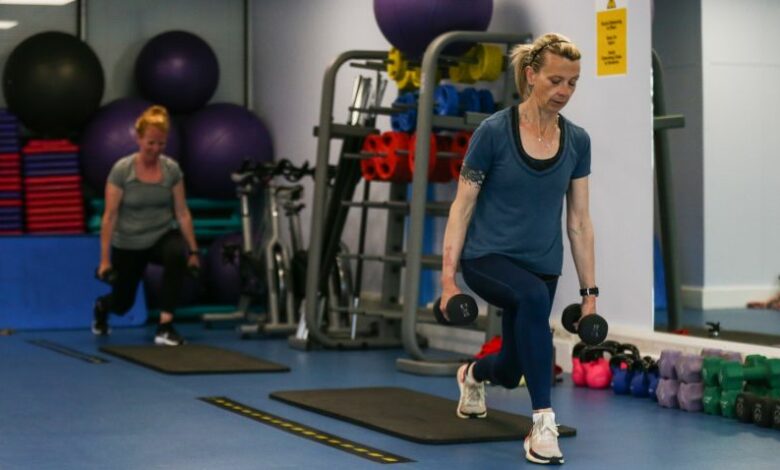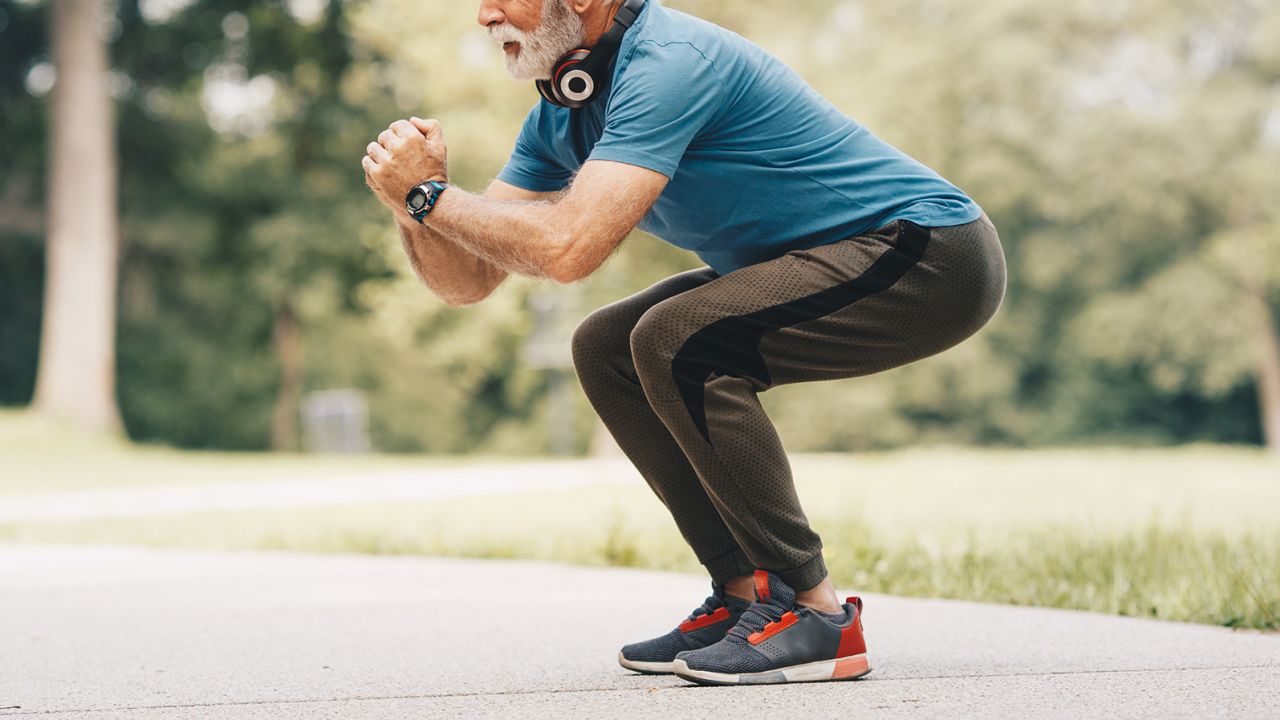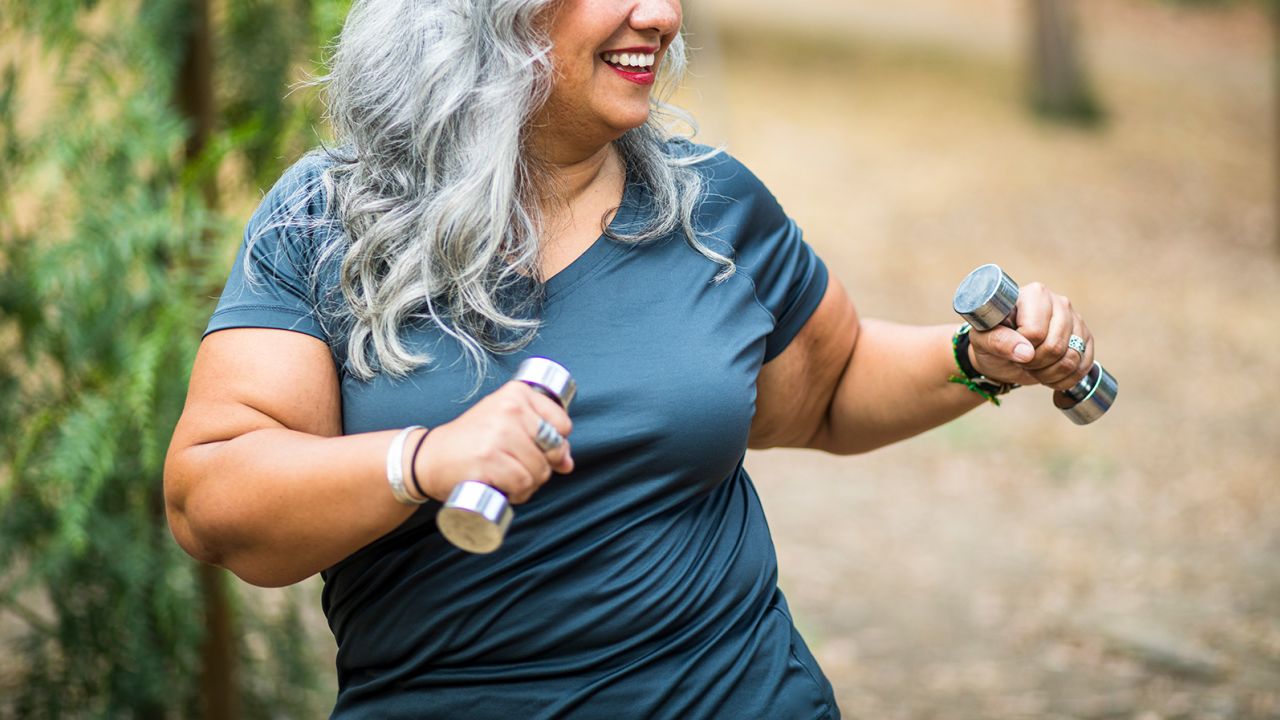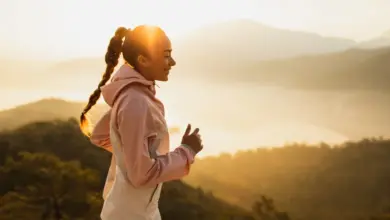
No matter how active we are, our muscle mass and strength decline as we age. In fact, muscle mass and strength peak at 30 to 35 years old. After that, they slowly but steadily decline. At age 65 for women and 70 for men, the pace of these declines increases, according to the National Institutes of Health. Similarly, everyone’s balance and flexibility decrease with age due to changes in vision, sensory nerves, joints, ligaments and more.
“Joints in the spine, hips, knees and shoulders naturally become more arthritic with age, and our ligaments and the interfaces between our tendons and muscles become more rigid,” said Dr. George Eldayrie, a sports medicine physician with the Orlando Health Jewett Orthopedic Institute in Winter Garden, Florida. “It’s a very known process.”
Because these declines are well-documented, the US Centers for Disease Control and Prevention recommends adults 65 and older engage in moderate-intensity exercise at least 150 minutes a week. In addition, they should perform strength training and balance exercises at least twice weekly.

How to improve the quality and quantity of your life
Strength, balance and flexibility are all important, but is boosting one more critical than another? In general, if you’re looking to improve the quality and quantity of your life, getting in some aerobic exercise should be your main concern, said Dr. John Higgins, a sports cardiologist at McGovern Medical School at the University of Texas Health Science Center at Houston. Resistance training is next in importance, with a mixture of balance and flexibility work coming in third.
On an individual level, though, it all depends on the patient, Eldayrie said. “For a master’s athlete, most likely strength and flexibility are more important to help with performance and decrease injuries,” he said. “Someone who’s 85 and wants to be functional, though, will be focused on balance and strength to help decrease their fall risk.”
There will also be differences based on a person’s health. Someone with arthritis should focus on joint flexibility first, Eldayrie said, while someone who just had a knee replacement should concentrate on strength training. If you have osteoporosis, it’s important to work on balance to avoid falls.
How to get moving
Despite evidence backing the importance of physical activity, 28% of Americans 50 and older are inactive, according to a 2016 CDC study. In addition, inactivity increases with age, with more than 35% of those 75 and older inactive. That’s a problem. Physical activity can improve mental health and stave off dementia and cognitive decline. Couple that with the benefits of strength, balance and flexibility work, and you’ve got a great chance at aging well.

“Think about it like a pyramid,” Higgins said. “Aerobic exercise is the top of the pyramid, with the bricks supporting it being strength, balance and flexibility. Without those basics, the pyramid will crumble. You can’t get by on one of those things alone.”
If the thought of incorporating aerobic exercise, strength training, and balance and flexibility work into your weekly routine seems overwhelming, keep in mind you don’t necessarily need a gym membership or personal trainer. This important work can be woven into your life rather seamlessly.
For example, playing golf and gardening are enjoyable ways to add some aerobic exercise to your life. So is walking the dog. Strap on a weighted backpack during your walk, and now you’re “rucking,” an exercise based on military training that combines aerobic exercise with strength training. Yoga is an easy-on-the-body activity that aids in flexibility, but it also boosts strength and activates your core. Standing on one foot in the grocery line or in front of the television is an easy way to add some balance training to your life.
“A lot of people like to complicate things by having a plan and measuring their progress, but it doesn’t need to be that complicated,” Eldayrie said. “Just incorporate these things into your day-to-day life and be consistent. The benefits will come over time.”
Higgins agreed. “If you don’t believe strength training, balance and flexibility work will really help, give it a try for a few months and see what a difference it makes,” he said. “You will probably find that you enjoy things more and that you are able to do regular aerobic work more easily and with less injuries, whether that’s playing with the grandkids or doing an exciting activity like zip lining.”
Melanie Radzicki McManus is a freelance writer who specializes in hiking, travel and fitness.




